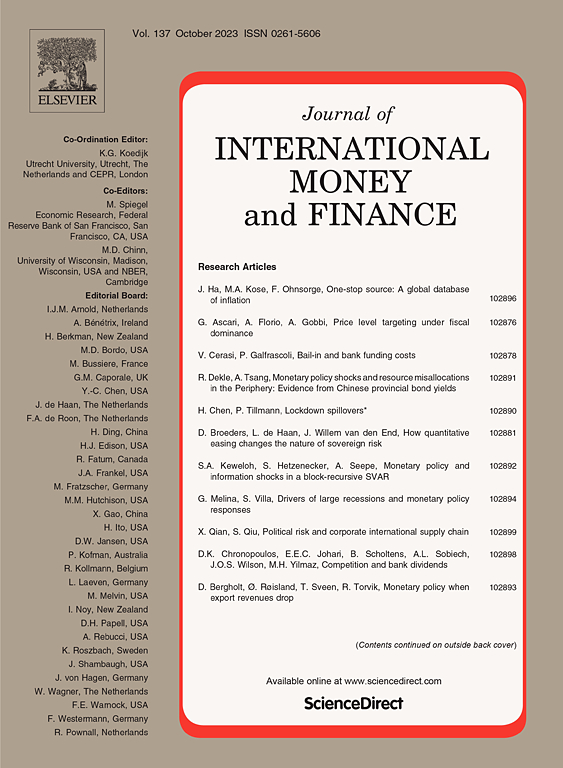NEW PUBLICATION: The global financial crisis has brought increased attention to the consequences of international reserves holdings. In an era of high financial integration, we investigate the relationship between the real exchange rate and international reserves using nonlinear regressions and panel threshold regressions over 110 countries from 2001 to 2020. Our study shows the level of financial-institution development plays an essential role in explaining the buffer effect of international reserves. Countries with a low development of their financial institutions may manage the international reserves as a shield to deal with the negative consequences of terms-of-trade shocks on the real exchange rate. We also find the buffer effect is stronger in countries with intermediate levels of financial openness.
You can find the WP version, the abstract, the keywords and the online appendix in an older post:
https://www.jamelsaadaoui.com/real-exchange-rate-and-international-reserves-in-the-era-of-financial-integration/.
Please note that the NBER WP has been updated: https://www.nber.org/papers/w30891.
You can quote this article as:
Joshua Aizenman, Sy-Hoa Ho, Luu Duc Toan Huynh, Jamel Saadaoui, Gazi Salah Uddin, Real exchange rate and international reserves in the era of financial integration, Journal of International Money and Finance,
2024, 103014, https://doi.org/10.1016/j.jimonfin.2024.103014.

9 Comments
Indeed, I want to test the effect of FXI and capital flow management to exchange rate, can you give any tips?
I recommend the following databases and associated papers:
https://www.brookings.edu/articles/the-external-wealth-of-nations-database/
https://sites.google.com/site/ruimano/data/fx-intervention-dataset
I hope it helps!
Kind regards,
Jamel
Can I find all dataset from DBeconomics? How to distinguish AE and EME from all countries pannel data?
Yes, absolutely, you can use the following blogs for possible guidance: https://www.jamelsaadaoui.com/?s=dbnomics
All the calculations were performed with Stata 17.0, as mentioned in the paper. Besides, the sources of the data are described in the paper and are publicly available. I hope it helps!
hi,Prof Jamel Saadaoui, I have 2 questions.The 1st is how to use DBnomics to get the data used in this paper,2nd is how to draw buffer effect 3D in this paper.
how to do the two kinds of regressions in your paper, namely panel nonlinear regressions with interaction terms and panel threshold regressions with country fixed effects, do you have any easy access to the database in you paper?
hi,Prof Jamel Saadaoui, I have 2 questions.The 1st is how to use DBnomics to get the data used in this paper,2nd is how to draw buffer effect 3D in this paper.
1st question: https://www.jamelsaadaoui.com/using-dbnomics-with-stata/
2nd question: https://blog.stata.com/2020/09/14/stata-python-integration-part-5-three-dimensional-surface-plots-of-marginal-predictions/
Cheers!